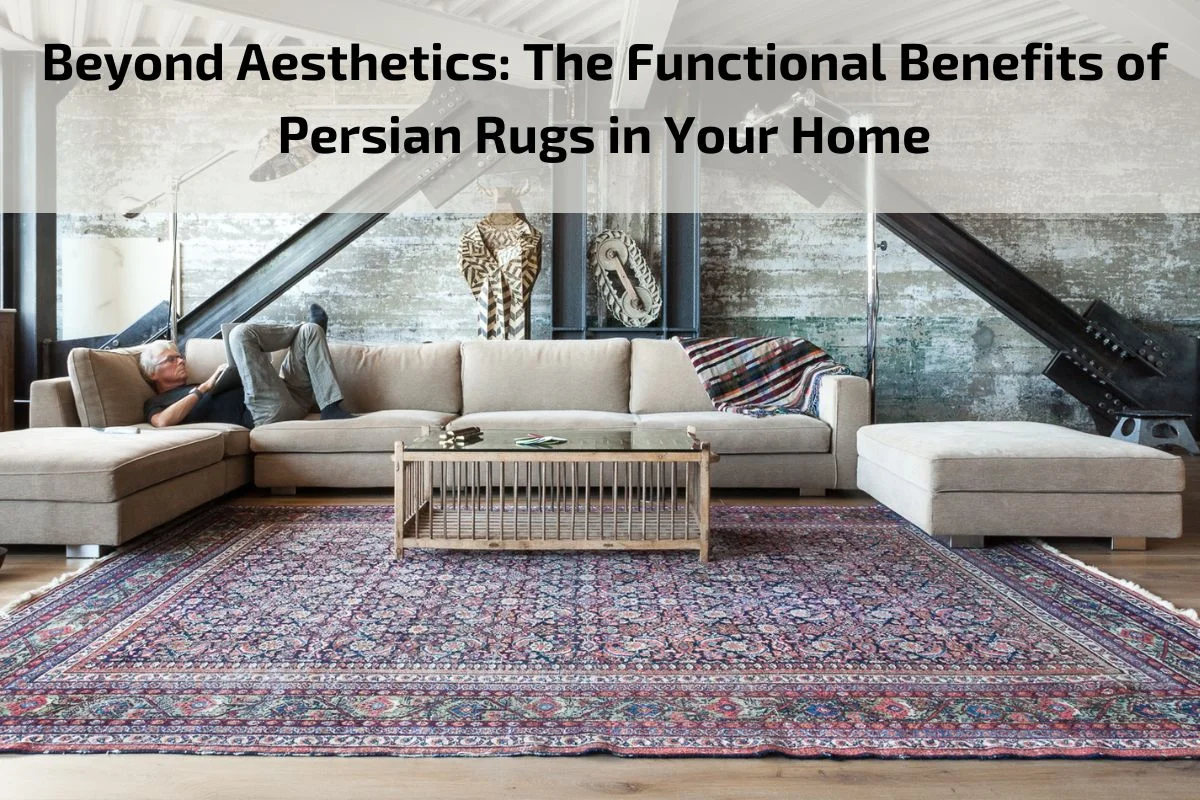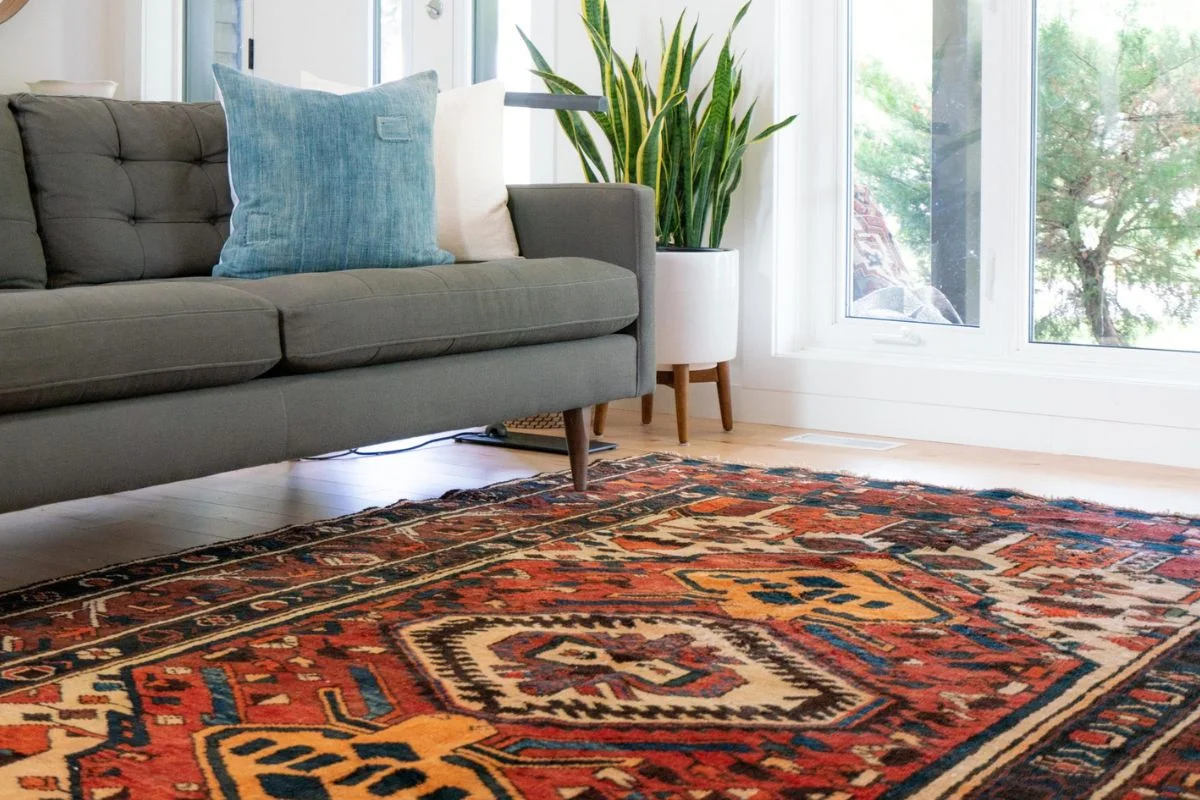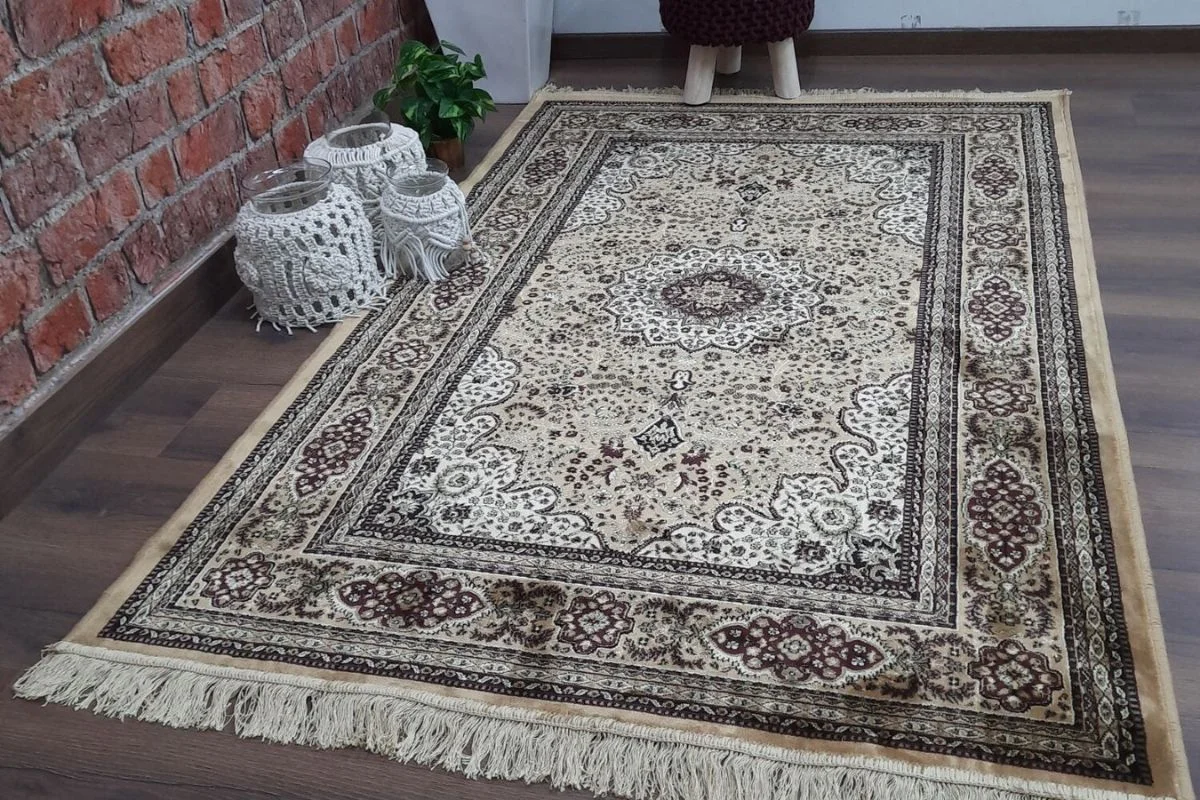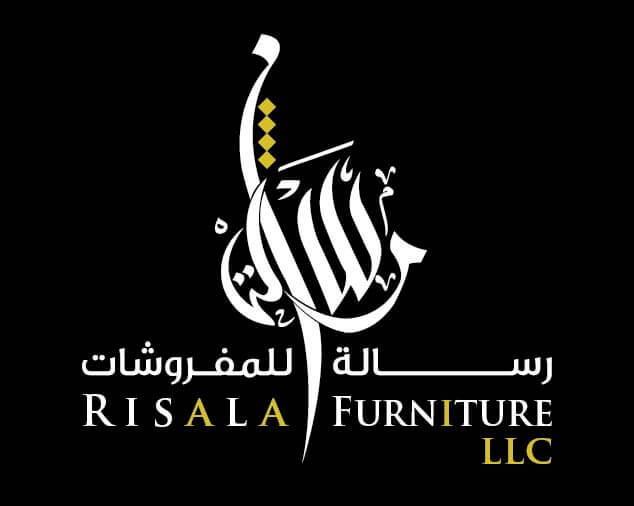Beyond their stunning visual appeal, Persian rugs bring a myriad of functional benefits into the heart of your home. Woven with a rich tapestry of culture, history, and craftsmanship, these rugs are more than just floor coverings—they are artefacts of enduring tradition and timeless elegance. As we delve into the world of Persian rugs, we discover that their significance goes far beyond aesthetics. In this exploration, we will uncover the practical advantages that Persian rugs offer, enhancing not only the visual charm of your living spaces but also contributing to a more comfortable and harmonious home environment. From insulation properties to sound absorption and durability, Persian rugs stand as versatile additions that blend heritage with utility, making them an integral part of home décor that transcends mere adornment. Join us on a journey where form meets function, and the artistry of Persian rugs unfolds in ways that go beyond the surface, bringing depth and purpose to the very foundation of your home.
Definition of Persian rugs
Persian rugs, also known as Iranian carpets, are exquisite handwoven textile floor coverings originating from the diverse regions of Iran. Renowned for their unparalleled craftsmanship, intricate designs, and rich cultural significance, Persian rugs are considered timeless artefacts of artistry and tradition.
These rugs are traditionally crafted using a labour-intensive process that involves the meticulous hand-knotting of threads, resulting in a dense, durable, and luxurious final product. The designs vary widely, reflecting the distinct artistic styles of different regions within Iran, each with its unique patterns, colours, and motifs.
What sets Persian rugs apart is not just their aesthetic appeal but also the depth of cultural storytelling woven into every inch. The designs often carry symbolic meanings, reflecting the heritage, beliefs, and history of the weavers’ communities. This cultural richness, combined with the superior craftsmanship, makes Persian rugs highly sought after for both decorative and investment purposes.
Persian rugs have transcended their traditional roles as floor coverings to become symbols of prestige, luxury, and a deep connection to Iran’s artistic heritage. Whether displayed in homes, museums, or as part of global art collections, Persian rugs continue to captivate admirers worldwide, serving as a testament to the enduring legacy of this ancient craft.
What are the different types of Persian rugs
Persian rugs come in a variety of types, each distinguished by its region of origin, unique design elements, and weaving techniques. Here are some well-known types of Persian rugs:
Tabriz Rugs:
Originating from Tabriz, these rugs often feature intricate floral and geometric designs. They are known for their fine craftsmanship and use of high-quality materials.
Kashan Rugs:
Hailing from the city of Kashan, these rugs are recognized for their central medallion designs and floral motifs. Kashan rugs are often made with silk and wool, giving them a luxurious feel.
Isfahan Rugs:
Isfahan rugs are crafted in the city of Isfahan and are celebrated for their detailed, symmetrical designs. They often showcase elaborate central medallions surrounded by intricate patterns.
Hertz Rugs:
Originating from the Hertz region, these rugs are known for their bold geometric patterns and a distinctive medallion at the centre. Hertz rugs are durable and have a rustic charm.
Sarouk Rugs:
Sarouk rugs, woven in the village of Sarouk and surrounding areas, are recognized for their dense, plush pile and floral designs. They often feature a rich color palette, including deep reds and blues.
Shiraz Rugs:
Hailing from the city of Shiraz, these rugs often showcase tribal designs and bold geometric patterns. They are known for their durability and are sometimes referred to as Gabbed rugs.
Nain Rugs:
Nain rugs, woven in the Nain region, are characterized by their use of silk and intricate patterns. They often feature a central medallion with delicate floral or curvilinear designs.
Qom Rugs:
Qom rugs, crafted in the city of Qom, are highly regarded for their fine silk construction and intricate, often religious, designs. They are considered among the most luxurious Persian rugs.
Bid jar Rugs:
Bid jar rugs, woven in the town of Bid jar, are known for their durability and strong, tightly packed weaves. They often feature geometric designs and are sometimes referred to as “Iron Rugs.”
Kerman Rugs:
Hailing from the city of Kerman, these rugs are known for their elaborate floral patterns and vibrant colour palettes. Kerman rugs often feature a central medallion surrounded by intricate detailing.
What is the significance of Persian rug designs
The significance of Persian rug designs goes beyond mere aesthetics, as each pattern and motif is deeply rooted in the history, culture, and traditions of the region. Here are some key aspects that highlight the significance of Persian rug designs:
Cultural Symbolism:
Persian rug designs often carry symbolic meanings that reflect the cultural identity of the weavers’ communities. Common motifs may represent elements from nature, historical events, or religious beliefs. These symbols connect the rug to the cultural heritage of the region.
Historical Narratives:
Many Persian rug designs tell stories and convey historical narratives. Scenes of battles, royal courts, or cultural ceremonies can be intricately woven into the fabric, preserving and recounting important events from the past.
Regional Distinctions:
Different regions in Iran have their own distinct design styles. For example, Tabriz rugs may feature detailed floral patterns, while Heriz rugs are known for bold geometric designs. The diversity of Persian rug designs allows them to serve as markers of regional identity and craftsmanship.
Spiritual and Religious Significance:
Persian rug designs often incorporate elements with spiritual and religious significance. Symbols such as stars, medallions, or geometric patterns can represent cosmic order, spirituality, and cultural beliefs, adding a layer of depth to the rugs.
Artistic Expression:
Weaving Persian rugs is a form of artistic expression for the craftsmen. The intricate designs showcase the weavers’ skills and creativity, turning each rug into a unique work of art. The combination of colours, patterns, and textures reflects the weaver’s personal touch.
Wishes for Good Luck and Protection:
Some Persian rug designs include motifs believed to bring good luck, protection, or prosperity to the owners. Symbols like the Tree of Life, birds, and animals are woven with the intention of imparting positive qualities to the space where the rug is placed.
Harmony and Balance:
Persian rug designs often adhere to principles of symmetry and balance. The careful arrangement of motifs and colours reflects a sense of harmony, providing a visually pleasing and balanced aesthetic to the observer.
Passing Down Traditions:
Through the continuation of traditional designs, Persian rugs serve as a means of passing down cultural and artistic traditions from generation to generation. The skills and techniques involved in rug making are often handed down within families or communities.
Persian rugs be used in modern interior design
Absolutely, Persian rugs can seamlessly integrate into modern interior design, adding a touch of timeless elegance and cultural richness to contemporary spaces. Here’s how Persian rugs can enhance and complement modern interior design:
Blend of Tradition and Modernity:
Persian rugs bring a sense of history and tradition into modern interiors. The juxtaposition of intricate, traditional designs against clean, modern lines creates a visually appealing contrast, striking a balance between the old and the new.
Colour Harmony:
The vibrant and diverse colour palettes of Persian rugs can be used to harmonise or accentuate modern colour schemes. Whether you opt for bold, contrasting colours or muted tones, Persian rugs offer a wide range of options to suit different interior styles.
Statement Pieces:
Persian rugs often feature intricate patterns and designs that can serve as statement pieces in a room. Placing a Persian rug in a key area, such as the living room or dining space, can become a focal point, adding character and sophistication to the overall design.
Texture and Warmth:
The plush and dense texture of Persian rugs provides a luxurious feel underfoot. In modern spaces characterised by hard surfaces like wood or tile, a Persian rug can introduce warmth and comfort, making the room more inviting.
Versatility in Design:
Persian rugs come in a variety of designs, from traditional medallions to more contemporary, abstract patterns. This versatility allows them to adapt to different interior design styles, catering to the preferences of homeowners with a wide range of tastes.
Cultural Aesthetics:
Incorporating Persian rugs into modern design celebrates cultural diversity and adds a layer of authenticity to the space. These rugs carry a sense of craftsmanship and cultural storytelling, providing a unique and personal touch to the interior.
Define Spaces:
In open-concept spaces, Persian rugs can be used to define specific areas, such as seating or dining areas. The rug acts as a visual anchor, creating a sense of purpose for each designated space within the larger room.
Accessorising with History:
Placing a Persian rug in a modern setting is akin to adding a piece of history as an accessory. It becomes more than just a functional item but a conversation starter and a showcase of craftsmanship that transcends time.
Layering and Dimension:
Layering a Persian rug over a contemporary flooring surface adds depth and dimension to the room. This layering effect can break up monotony and introduce visual interest, enhancing the overall design scheme.
Sustainable Choice:
Handcrafted Persian rugs are often made from natural materials, making them an environmentally friendly and sustainable choice. Integrating such eco-friendly elements aligns with modern design principles focused on sustainability.
How do I care for my Persian rug
Caring for your Persian rug requires a combination of regular maintenance and specific cleaning practices to ensure its longevity and beauty. Here’s a comprehensive guide on how to care for your Persian rug:
Regular Vacuuming:
Vacuum your Persian rug regularly to remove loose dirt, dust, and debris. Use a vacuum cleaner with adjustable height settings to avoid applying too much pressure on the rug fibers.
Rotate Periodically:
Rotate your rug at least once a year to ensure even wear. This is particularly important in high-traffic areas or if the rug is exposed to sunlight, as it helps prevent uneven fading and wear patterns.
Avoid Direct Sunlight:
Limit the rug’s exposure to direct sunlight, which can cause colors to fade over time. If possible, use window treatments such as curtains or blinds to protect the rug from prolonged sun exposure.
Use Rug Pads:
Place a quality rug pad underneath your Persian rug to provide extra cushioning, prevent slipping, and protect the rug from wear. Rug pads also facilitate air circulation, preventing moisture buildup that can lead to mould and mildew.
Attend to Spills Immediately:
Act quickly if spills occur. Blot the affected area with a clean, dry cloth or paper towel to absorb as much liquid as possible. Avoid rubbing, as it can spread the stain and damage the rug fibers.
Professional Cleaning:
Schedule professional cleaning for your Persian rug every 1-3 years, depending on its exposure to foot traffic and environmental factors. Professional cleaners have the expertise to remove deep-seated dirt and stains without causing damage.
Be Mindful of Pets:
Keep an eye on pets to prevent them from scratching or chewing on the rug. Attend to pet accidents promptly, cleaning and drying the affected area to prevent odors and stains.
Rotate Furniture:
Periodically rearrange your furniture to distribute weight evenly across the rug. This helps prevent uneven wear and reduces the likelihood of developing permanent indentations.
Air Out the Rug:
Allow your Persian rug to breathe by occasionally airing it out. On a sunny day, take the rug outdoors and hang it over a railing or a clean, dry surface to let fresh air circulate through the fibers.
Conclusion
In conclusion, caring for your Persian rug involves a combination of regular maintenance, preventive measures, and thoughtful cleaning practices. By incorporating these steps into your rug care routine, you can ensure that your Persian rug not only retains its exquisite beauty but also stands the test of time.
